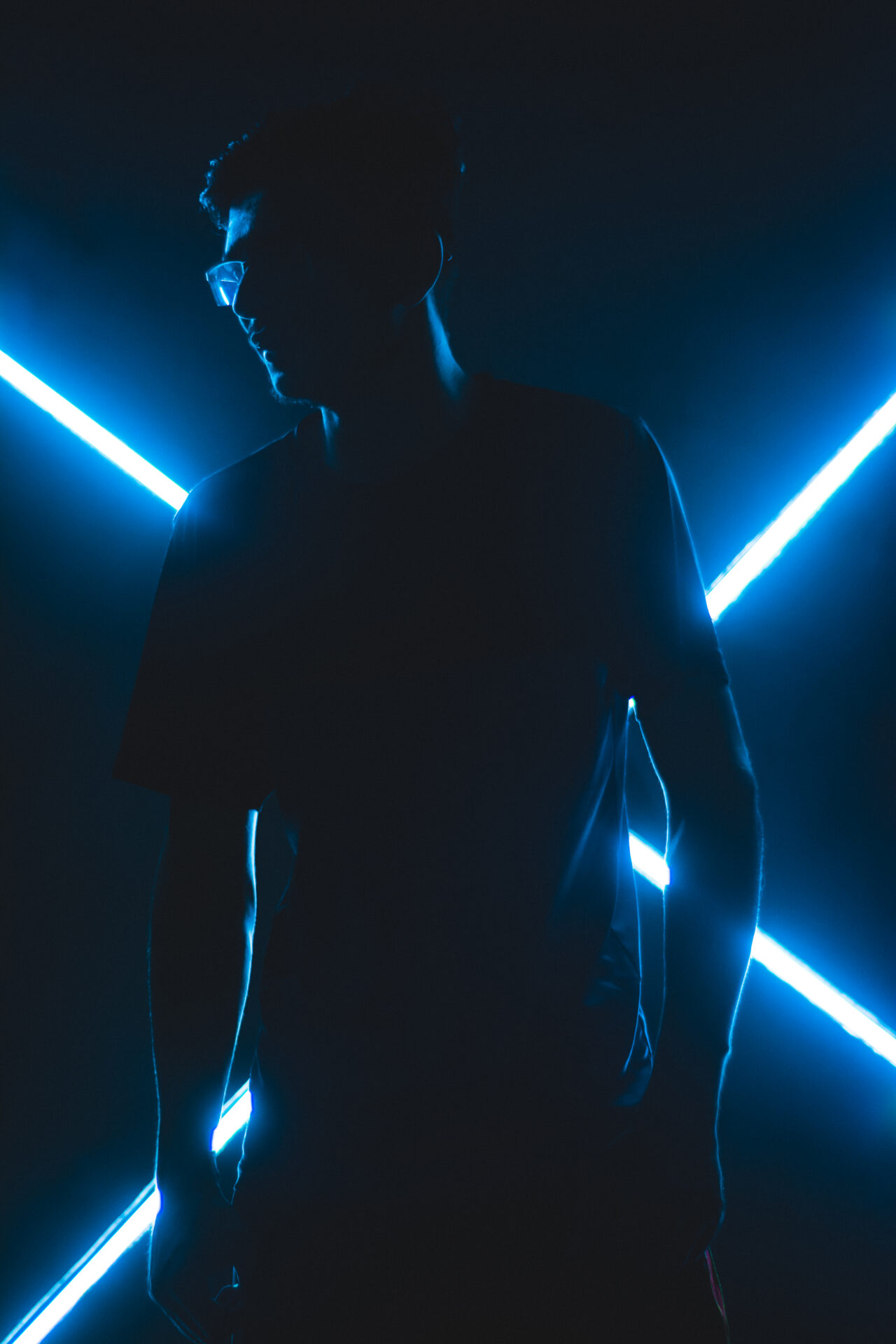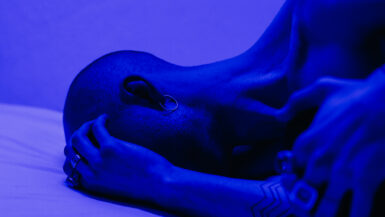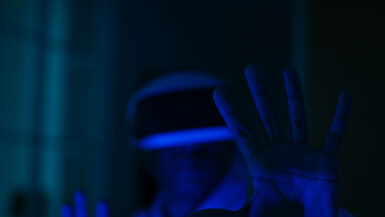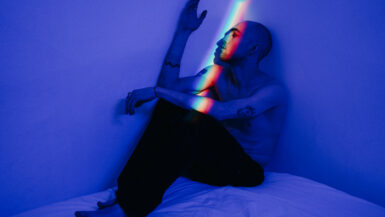In today’s fast-paced, technology-driven world, the effects of blue light on our sleep patterns and productivity have become an area of growing concern and scientific inquiry. The Science Behind Blue Light and Insomnia delves deep into the intricacies of this phenomenon, exploring the connection between our exposure to blue light-emitting devices and the subsequent impact on sleep quality, circadian rhythm, and overall well-being. The article presents a comprehensive analysis of the research conducted in this domain, highlighting the physiological processes at play and offering pragmatic solutions to mitigate the adverse effects of blue light on our daily lives. As we navigate the complexities of modern living, understanding the science behind blue light and insomnia is crucial in striking the perfect balance between productivity and a good night’s sleep.
Tips for Minimizing Blue Light Exposure Before Bedtime
As we have explored the link between blue light exposure and its detrimental effects on sleep and productivity, it is vital to identify practical solutions for minimizing this exposure, especially during the hours leading up to bedtime. In this section, we will delve into various strategies that can help mitigate the impact of blue light on our sleep patterns and overall well-being.
Establishing a Screen-Free Evening Routine
One of the most effective ways to minimize blue light exposure is to establish a screen-free evening routine. By avoiding the use of electronic devices such as smartphones, tablets, and laptops at least an hour before bedtime, you give your brain the opportunity to wind down and prepare for sleep. Consider engaging in relaxing activities such as reading a physical book, practicing meditation, or taking a warm bath to foster a calm and restful environment.
Investing in Blue Light Blocking Glasses
Another practical solution for reducing blue light exposure is to invest in blue light blocking glasses. These glasses are designed to filter out the blue light emitted by electronic devices, thereby reducing eye strain and promoting better sleep. Wearing these glasses in the evening, particularly while using screens, can help mitigate the negative effects of blue light on your sleep patterns.
Adjusting Device Settings and Utilizing Blue Light Filter Apps
Most modern electronic devices come with built-in settings that allow you to adjust the color temperature of your screen. Enabling the “night mode” or “warm light” settings can help reduce the amount of blue light emitted by the device. Additionally, there are several blue light filter apps available that can further customize your screen’s color temperature, providing an extra layer of protection against blue light exposure.
Optimizing Your Sleep Environment
Creating an optimal sleep environment is crucial for promoting restful sleep and minimizing the impact of blue light exposure. Ensure that your bedroom is dark, cool, and quiet, and consider using blackout curtains or an eye mask to block out any ambient light. Furthermore, it is essential to maintain a consistent sleep schedule, allowing your body to adapt to a regular circadian rhythm.
Being Mindful of Blue Light Exposure While Driving
Blue light exposure is not limited to our electronic devices; it can also be a concern while driving at night. Headlights, streetlights, and dashboard displays all emit blue light, which can impact our sleep and driving safety. To learn more about this issue and how to mitigate its effects, check out our article on The Impact of Blue Light on Sleep and Driving Safety.
By implementing these tips and being mindful of your blue light exposure, you can take proactive steps towards improving your sleep quality and overall productivity. Embracing these strategies will not only help you achieve a better night’s sleep but also enhance your overall well-being in today’s technology-driven world.
Effects of Blue Light Exposure on Sleep Patterns
In this section, we delve into the specific impacts of blue light exposure on our sleep patterns, exploring the physiological processes at play and how they affect our ability to fall asleep and maintain restful slumber. By understanding these processes, we can better comprehend the science behind blue light-induced insomnia and work towards mitigating its effects on our daily lives.
Disruption of Circadian Rhythm
One of the primary effects of blue light exposure on sleep patterns is the disruption of our body’s natural circadian rhythm. The circadian rhythm, often referred to as our internal “body clock,” regulates various physiological processes, including sleep-wake cycles, hormone production, and body temperature. Blue light exposure, especially in the evening, can interfere with the production of melatonin, the hormone responsible for inducing sleepiness. This interference results in a delayed sleep onset and disruption of the overall sleep cycle, causing difficulty falling asleep and staying asleep throughout the night.
Suppression of Melatonin Production
As mentioned earlier, blue light has a significant impact on melatonin production in the body. Melatonin is a hormone produced by the pineal gland, and its release is triggered by darkness. Blue light exposure in the evening can suppress the production of melatonin, making it harder for individuals to fall asleep and experience restorative sleep. This suppression can lead to symptoms of insomnia, daytime sleepiness, and overall reduced sleep quality.
Increased Alertness and Cognitive Stimulation
Another effect of blue light exposure on sleep patterns is the increased alertness and cognitive stimulation it can cause. Blue light has been shown to activate specific regions in the brain associated with alertness and attention, making it difficult for individuals to wind down and prepare for sleep. This heightened state of arousal can result in difficulty falling asleep, frequent awakenings during the night, and overall restless sleep.
Long-term Consequences on Health and Well-being
The effects of blue light exposure on sleep patterns do not only manifest in the short term; they can also have long-term consequences on overall health and well-being. Chronic sleep disruption caused by blue light exposure has been linked to various health issues, including obesity, cardiovascular disease, and mood disorders such as depression and anxiety. Moreover, insufficient sleep can lead to reduced cognitive function, impaired memory, and decreased productivity in daily activities.
By gaining a deeper understanding of the specific effects of blue light exposure on sleep patterns, we can better appreciate the science behind blue light-induced insomnia. Armed with this knowledge, we can take proactive steps to minimize our exposure to blue light and prioritize healthy sleep habits, ultimately enhancing our overall well-being and productivity in today’s fast-paced, technology-driven world.
Benefits of Blue Light Filtering Devices for Better Sleep
In this subsection, we will explore the advantages of using blue light filtering devices and their impact on sleep quality. With the increasing prevalence of electronic devices in our daily lives, it is crucial to understand the value of such tools in promoting better sleep and overall well-being. By adopting these devices, we can mitigate the negative effects of blue light exposure and cultivate healthy sleep habits that contribute to improved productivity and overall health.
Reduced Eye Strain and Discomfort
One of the primary benefits of blue light filtering devices is the reduction of eye strain and discomfort associated with extended screen time. Prolonged exposure to blue light can cause digital eye strain, resulting in symptoms such as dryness, irritation, and blurred vision. Blue light filtering devices help alleviate these symptoms by reducing the intensity of blue light emitted by screens, thus promoting better visual comfort and overall eye health.
Enhanced Sleep Onset and Sleep Quality
By utilizing blue light filtering devices, individuals can experience a more natural sleep onset and improved sleep quality. As these devices reduce the amount of blue light exposure in the evening, they help restore the natural balance of melatonin production in the body. This restoration allows for an easier transition to sleep and a more restorative slumber, leading to increased alertness and productivity during the day.
Reduced Risk of Long-term Health Issues
As mentioned earlier, chronic sleep disruption caused by blue light exposure has been linked to various health issues, including obesity, cardiovascular disease, and mood disorders. By incorporating blue light filtering devices into our daily routines, we can reduce the risk of developing these long-term health problems. In doing so, we safeguard our overall well-being and contribute to a healthier, more balanced lifestyle.
Increased Productivity and Cognitive Function
Another advantage of using blue light filtering devices is the potential boost in productivity and cognitive function. By promoting better sleep quality and reducing the symptoms of digital eye strain, these devices can enhance our ability to focus and process information effectively. Consequently, this increased cognitive function can lead to greater productivity in both personal and professional spheres, ultimately contributing to an improved quality of life.
Supporting a Healthier Work-Life Balance
Lastly, the use of blue light filtering devices can help support a healthier work-life balance. In today’s fast-paced world, it is increasingly challenging to separate work and personal life, often resulting in extended screen time and increased blue light exposure. By adopting blue light filtering devices, we can establish healthier boundaries between our digital and offline lives, promoting better sleep and overall well-being in the process.
To sum up, blue light filtering devices offer numerous benefits that contribute to better sleep, improved productivity, and overall health. By incorporating these tools into our daily routines, we can effectively combat the negative effects of blue light exposure and safeguard our well-being in an increasingly technology-driven world.
Connection Between Blue Light and Circadian Rhythm
In this subsection, we will delve into the complex relationship between blue light exposure and our body’s circadian rhythm. By understanding the intricacies of this connection, we can gain valuable insights into how blue light impacts our sleep quality and overall well-being. This knowledge will not only allow us to make informed decisions about our technology usage but also empower us to take proactive steps in mitigating the adverse effects of blue light on our sleep patterns and daily lives.
Understanding the Role of Circadian Rhythm in Sleep Regulation
Before we explore the connection between blue light and circadian rhythm, it is essential to comprehend the role of circadian rhythm in sleep regulation. Our body’s circadian rhythm, often referred to as the “internal body clock,” is a 24-hour cycle that governs various physiological processes, including sleep-wake cycles, hormone production, and body temperature. This rhythm is primarily regulated by the suprachiasmatic nucleus (SCN), a group of cells located in the hypothalamus, which receives input from the retina in response to light exposure. By synchronizing our internal clock with the external environment, the circadian rhythm plays a crucial role in maintaining healthy sleep patterns and overall well-being.
Blue Light’s Impact on Melatonin Production and Sleep Onset
One of the most significant connections between blue light exposure and circadian rhythm lies in the regulation of melatonin production. Melatonin, often referred to as the “sleep hormone,” is produced by the pineal gland and released into the bloodstream in response to darkness. This hormone plays a critical role in inducing sleepiness and maintaining a healthy sleep-wake cycle. Blue light exposure, particularly in the evening, can suppress the production of melatonin, leading to a disrupted circadian rhythm and difficulty falling asleep. By impacting our body’s natural melatonin production, blue light directly interferes with our ability to transition into a restful slumber.
Disruptions to Circadian Rhythm and Sleep Quality
Prolonged exposure to blue light, especially during the evening, can lead to significant disruptions in our body’s circadian rhythm. This disruption results in a misalignment between our internal body clock and the external environment, causing difficulty in falling asleep and maintaining restful sleep throughout the night. These disruptions can also lead to various sleep disorders, such as insomnia or delayed sleep phase syndrome. By understanding how blue light exposure affects our circadian rhythm, we can better comprehend the underlying cause of these sleep disturbances and work towards finding effective solutions.
Long-term Consequences of Circadian Rhythm Disruption
The long-term consequences of circadian rhythm disruption, often caused by frequent blue light exposure, can be far-reaching and detrimental to our overall health. These disruptions have been linked to numerous health issues, including obesity, cardiovascular disease, and mood disorders like depression and anxiety. Additionally, chronic sleep disruptions can impair cognitive function, memory, and productivity in daily activities. By recognizing the connection between blue light exposure and circadian rhythm disruption, we can take proactive measures to minimize the impact of blue light on our sleep patterns and overall well-being.
In summary, the connection between blue light exposure and circadian rhythm is a complex yet crucial aspect of understanding the science behind blue light and insomnia. By acknowledging this relationship, we can make informed decisions about our technology usage and implement strategies to mitigate the negative effects of blue light on our sleep patterns. This knowledge ultimately empowers us to take control of our sleep quality and overall well-being in today’s technology-driven world.
How Blue Light Affects Melatonin Production
In this subsection, we will delve into the intricate relationship between blue light exposure and melatonin production, exploring the physiological processes involved and their impact on our ability to fall asleep and experience restorative sleep. By gaining a deeper understanding of these mechanisms, we can better comprehend the science behind blue light-induced insomnia and implement effective strategies to counteract its adverse effects on our sleep patterns and overall well-being.
The Crucial Role of Melatonin in Sleep Regulation
Melatonin, commonly referred to as the “sleep hormone,” plays a vital role in sleep regulation. Produced by the pineal gland, melatonin is released into the bloodstream in response to darkness, signaling to our body that it’s time to wind down and prepare for sleep. This hormone is a key component in maintaining a healthy sleep-wake cycle, as it helps to synchronize our internal body clock with the external environment, thus promoting a restful and restorative slumber.
Suppression of Melatonin Production by Blue Light Exposure
Blue light exposure, particularly in the evening, can have a significant impact on our body’s ability to produce melatonin. As blue light stimulates the photoreceptors in our eyes, it sends a signal to the suprachiasmatic nucleus (SCN), which subsequently inhibits the release of melatonin. This suppression disrupts the natural balance of melatonin production and makes it more difficult for individuals to fall asleep and experience restorative sleep.
Consequences of Reduced Melatonin Production on Sleep Quality
The reduction in melatonin production caused by blue light exposure can have a profound effect on our sleep quality. With lower levels of melatonin circulating in our bloodstream, it becomes increasingly challenging to fall asleep and stay asleep throughout the night. This disruption can result in symptoms of insomnia, frequent awakenings, and overall restless sleep, ultimately contributing to a decline in our well-being and productivity.
Strategies to Counteract the Impact of Blue Light on Melatonin Production
In recognizing the detrimental effects of blue light exposure on melatonin production, it becomes crucial to implement strategies that minimize this impact and promote healthy sleep habits. Some practical solutions include creating a screen-free evening routine, using blue light filtering devices, and optimizing our sleep environment. By adopting these measures, we can effectively counteract the suppression of melatonin production and promote a more balanced and restorative sleep cycle.
Understanding the complex relationship between blue light exposure and melatonin production is essential in grasping the science behind blue light-induced insomnia. With this knowledge, we are empowered to take proactive steps towards mitigating the negative effects of blue light on our sleep patterns and ultimately enhancing our well-being and productivity in a technology-driven world.





Leave a reply